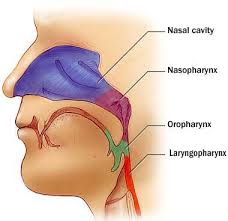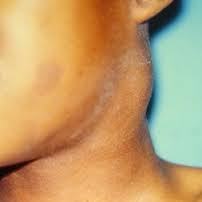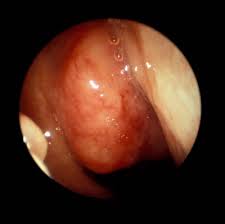Nasopharyngeal Carcinoma Symptoms and Treatment
04 April 2019
Nasopharyngeal carcinoma is a tumor arising from the epithelium of the nasopharynx. This is the part of the throat directly behind the nose and above the palate. The area of the Nasopharynx most associated with NPC is the Fossa of Rosenmuller which lies adjacent to the Eustachian tube openings.

The disease is far more common in Southern China and Southeast Asia and particularly in persons of Southern Chinese descent from the Guangzhou/Shanghai/Shenzen/Hong Kong area.
A male preponderance is observed. The male-to-female ratio is approximately 2:1.
Nasopharyngeal carcinoma has a bimodal age distribution. A small peak is observed in late childhood, and a second peak occurs in people aged 50-60 years.
Nasopharyngeal Carcinoma Symptoms
Nasopharyngeal carcinoma rarely comes to medical attention before it has spread to regional lymph nodes. Enlargement and extension of the tumor in the nasopharynx may result in symptoms of nasal obstruction (eg, congestion, nasal discharge, bleeding), changes in hearing (usually associated with blockage of the eustachian tube, but direct extension into the ear is possible), and cranial nerve palsies (usually associated with extension of the tumor into the base of the skull).
Nasal symptoms: including bleeding, obstruction, and discharge (78%)
Ear symptoms: including infection, deafness, and tinnitus (73%
Headaches (61%)
Neck swelling (63%)
Nasopharyngeal Carcinoma Diagnosis
The most common physical finding is a neck mass consisting of painless firm lymph node enlargement (80%) and it is often bilateral.

Cranial nerve paralysis at initial presentation is observed in 25% of patients.
On Nasal Endoscopy, a mass arising in the nasopharynx is often visible.

Causes
Viral DNA in nasopharyngeal carcinoma has revealed that the Epstein-Barr virus (EBV) can infect epithelial cells and is associated with their transformation to cancer.
Genetic and environmental factors have been implicated in the development of this disease. A genetic etiology has been considered due to the higher rates of disease within specific ethnic groups, patients with first-degree relatives with the disease, patients with A2 HLA haplotypes, and cytogenetic abnormalities identified within tumor samples.
Environmental causes must be considered due to the geographical distribution of the disease, bimodal age distribution, and association seen in patients who consume a large amount of preserved foods and/or salted fish.
Nasopharyngeal Carcinoma Staging
The most essential investigation is a direct endoscopic biopsy followed by Histological examination of the suspected tumour to confirm the diagnosis.
In addition, CT scans of the Nasopharynx, Chest and Abdomen are also required to determine the extent of the tumour and to detect spread to other organs including the liver and lungs.
MRI is required to detect skull base involvement and a Bone scan is required to detect spread of tumour to the bones.
In addition to these radiological tests, routine blood investigations to check for anemia as well as liver and kidney function are also required.
These investigations will allow the overall extent and spread of the tumour to be determined, a process known as Staging, which will determine the type and duration of treatment. Patients will be staged into Stage I to IV, where Stage I is the earliest stage of the cancer and Stage IV is the most extensive stage.
Treatment
The current recommended treatment is Radiation Therapy(Radiotherapy) to the Nasopharynx, which is usually given 35 times , together with chemotherapy to increase chances of cure. Radiation alone confers long term survival rates of 40-50% but the addition of chemotherapy increases long term survival rates to 55-80% in Stage I-II Cancers.
Follow up is necessary after treatment and patients are seen every 3 months for the 1st year and every 6 months for the 2nd and 3rd years.
Conclusion
NPC is an easily diagnosed cancer that is unfortunately detected late because of a delayed presentation and also a delay in seeking medical attention.
Early Stage cancers can be effectively treated therefore the early detection of these tumours is essential. Patients should consult an ENT specialist early if they have any suspicious symptoms. If you experience any symptoms related to nasopharyngeal cacinoma book an appointment with Dr Shailendra Sivalingam now: https://www.sunwaymedical.com/en/doctor/dr-shailendra-sivalingam






